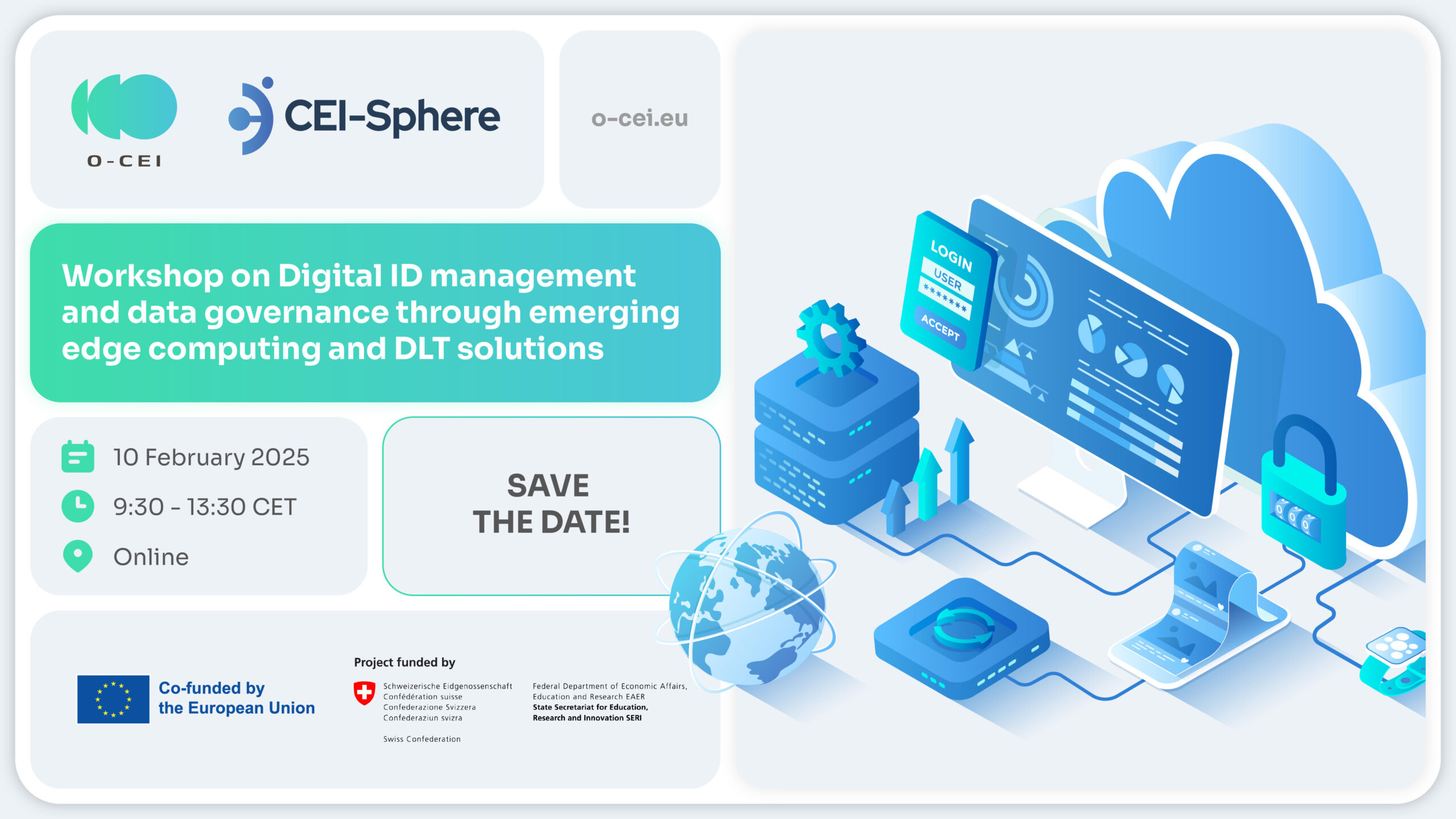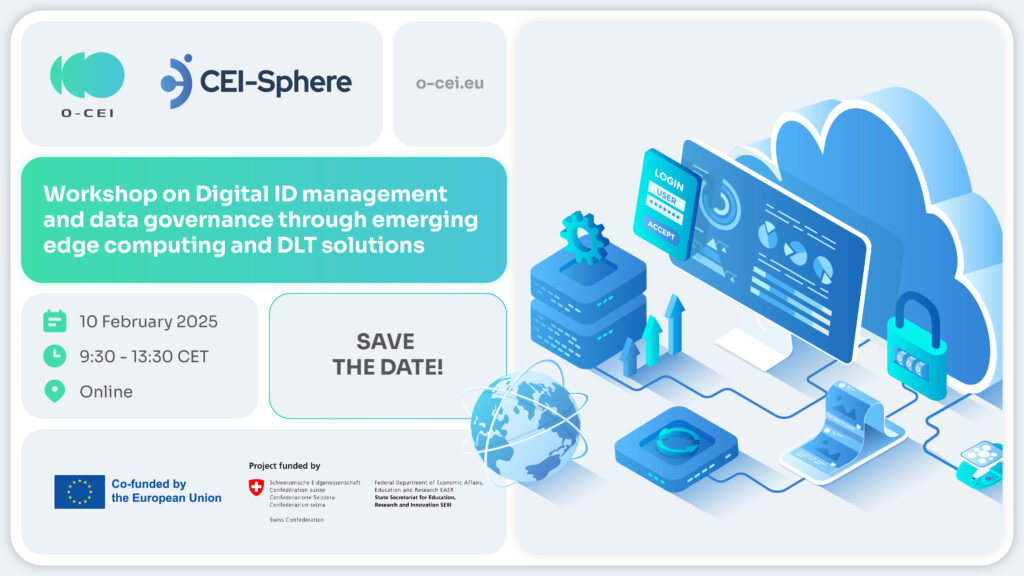Rapid advancements in artificial intelligence, edge computing, and blockchain have propelled European industries and societies into a new era of an AI-driven Age, which is transforming everything and changing it right now, in real-time. These converging technologies are reshaping the industrial fabric of our world, enabling swift adaptation of individual sectors due to economic and climate challenges, and in essence demanding cross-sector cooperation to drive a competitive and sustainable transition of key sectors like mobility, buildings, or energy.
Energy systems are becoming increasingly decentralized, driven by the rise in renewable energy sources and electrical assets. Flexible assets such as electric vehicles, heat pumps, solar panels, and residential batteries, etc. will link the energy sector to mobility and living to benefit from affordable green electricity and reduce its carbon footprint. At the core of the AI-driven age, secure and trusted methods will be required to safely integrate energy flows across different sectors and allow different energy assets to interact with the grid in a trusted manner.
The objective of the workshop is to address trusted and seamless data exchange across different sectors and explore aspects like ID management, distributed ledger, digital wallet, SSI, and edge computing for key applications that are piloted through the pilot project O-CEI, like smart building, Ev charging, etc… Core of the discussion will be to identify key enablers for a secure approach that enables identity-related information to be safely verified and exchanged between different parties, extending from current industrial initiatives for building a mature technology base to piloting IoT platforms and decentralized intelligence applications. In this context, it seems promising to explore the role Blockchain and other Distributed Ledger Technologies (DLT; like Ethereum, IOTA, Hyperledger, and others) could play in underpinning such systems of fully or at least largely decentralized identification.
The EU-funded O-CEI project will pilot cutting-edge solutions to drive cross-domain standards for flexible energy solutions by orchestrating cross-domain data sharing, minimizing energy footprint, and promoting open standards for virtualization and interoperability. It targets the adoption of edge paradigms and technologies in real-world environments in areas like electromobility, software-defined vehicles, logistics, smart agriculture and agri-food, smart urban environments, and multiple electricity grid management.
The focus of the workshop should be on related application scenarios across sectors, the underlying ID and data governance, and its potential use of distributed ledge technologies – with an unwavering commitment to preserving people’s sovereignty.
Proposed agenda and speakers:
- 09.30 - 09.50
European Commission intervention
- Rolf Riemenschneider
- European Commission
EC intervention for policy in Decentralized ID, sovereignty and DLT in energy-related large IoT deployments
Panel
Decentralized ID in DERs
- 09.50 - 10.00
Panel introduction
- Prof. Carlos E. Palau
- UPV
Data privacy centralization or decentralization: key challenges in Distributed Energy Resources (DERs)
- 10.00 - 11.00
Panel about Decentralization in DERs
- 10:00 (20 min)
- Prof. Jens Strüker
- Fraunhofer Blockchain Lab
The Need for a Digital Spine: How Web3-Technologies Unlock DER Flex Potential
- 10:20 (10 min)
- Mr. José Cantera
- IOTA
IOTA Tangle and digital Identity applied to digital product passports
- 10:30 (10 min)
- Mr. Jan Peters
- PLE
Accountability of energy flexibility
- 10:40 (20 min)
-
Prof. Jens Strüker,
Mr. José Cantera,
Mr. Jan Peters,
Prof. Carlos E. Palau
Panel and Q&A from the audience
Panel
Industry takeaways in key sectors
- 11.00 - 11.10
Panel introduction
- Mr. Óscar Lázaro
- INNO
Industry takeaways: Key challenges and trends in Decentralized ID, data sovereignty and DLT for Energy in Cloud-Edge-IoT
- 11.10 - 12.30
Panel about Industry takeaways in key sectors
- 11:10 (20 min)
-
Mr. Max Helmig,
Thomas Hahn - SIEMENS AG
–
- 11:30 (10 min)
- Mr. Mathieu Schumann
- EDF
Demand-side energy management and flexibility in French energy distribution
- 11:40 (10 min)
- Mr. Mathias Bölke
- SCHNEIDER
Energy Data-X: relevance of Data Spaces in the Industry
- 11:50 (10 min)
- Mr. Bernhard Peischl
- AVL
Importance of tamper-proof assets in Renewable Energy Communities and EV battery passport
- 12:00 (10 min)
-
Mr. Thomas Hahn,
Max. Helmig - SIEMENS AG
Role of IMX, OPC-UA and DLT/privacy in Digital Product Passport for Industry 4.0
- 12:10 (20 min)
-
Max Helmig,
Thomas Hahn,
Mr. Mathias Bölke,
Mr. Bernhard Peischl,
Mr. Mathieu Schumann,
Mr. Óscar Lázaro
Panel and Q&A from the audience
Session
Broader perspective sectors
- 12.30 - 13.20
Broader perspective: O-CEI related technologies as enabling solutions
- 12:30 (15 min)
- Mr. Madalin Neag
- OpenNebula
Creating synergies with the IPCEI-CIS and the Virt8ra architecture
- 12:45 (15 min)
- Mrs. Anhelina Kovach
- Ikerlan
Gaia-X and IDSA Connection: Tangle Integration
- 13:00 (10 min)
- Mr. Mario Petruzzella
- Arsys
Role of Verifiable Credentials (COP-PILOT connection)
- 13:10 (10 min)
- Mr. Georgios Stavropoulos
- CERTH
O-CEI’s angle & next steps
- 13.20 - 13.30
Closing




